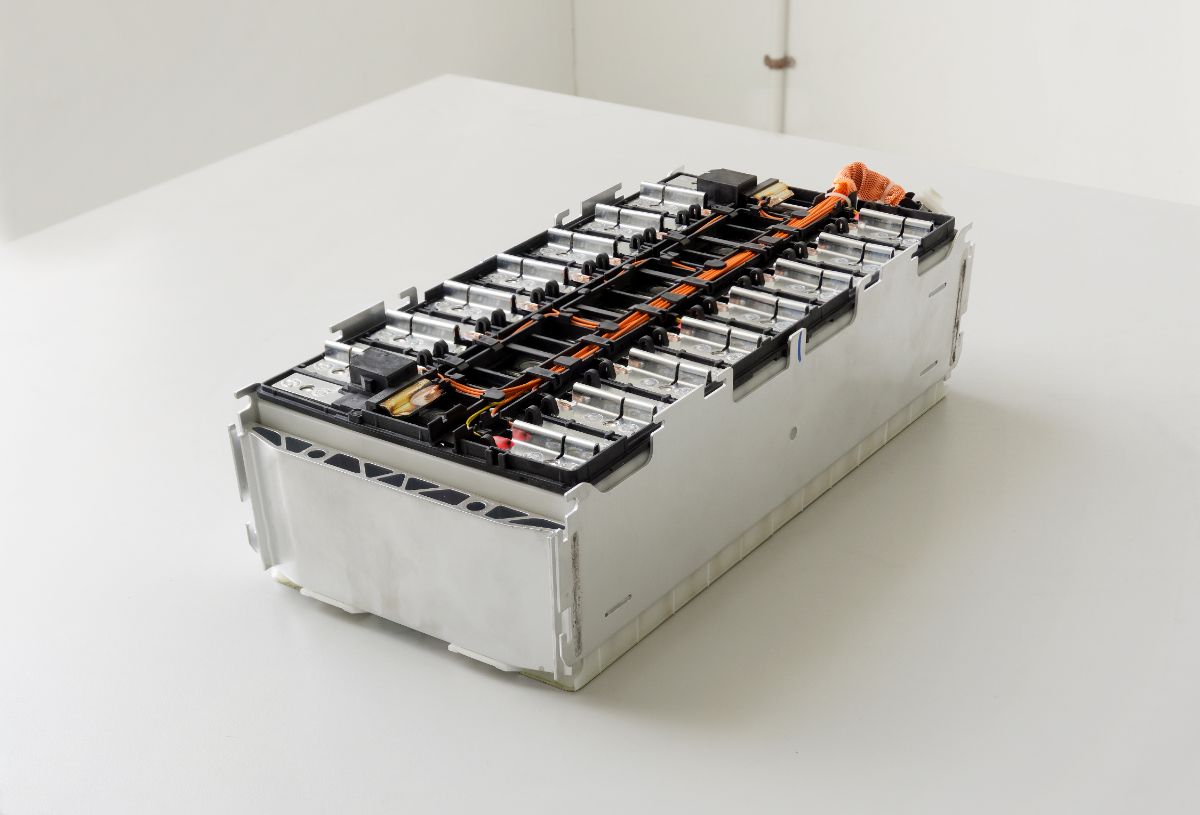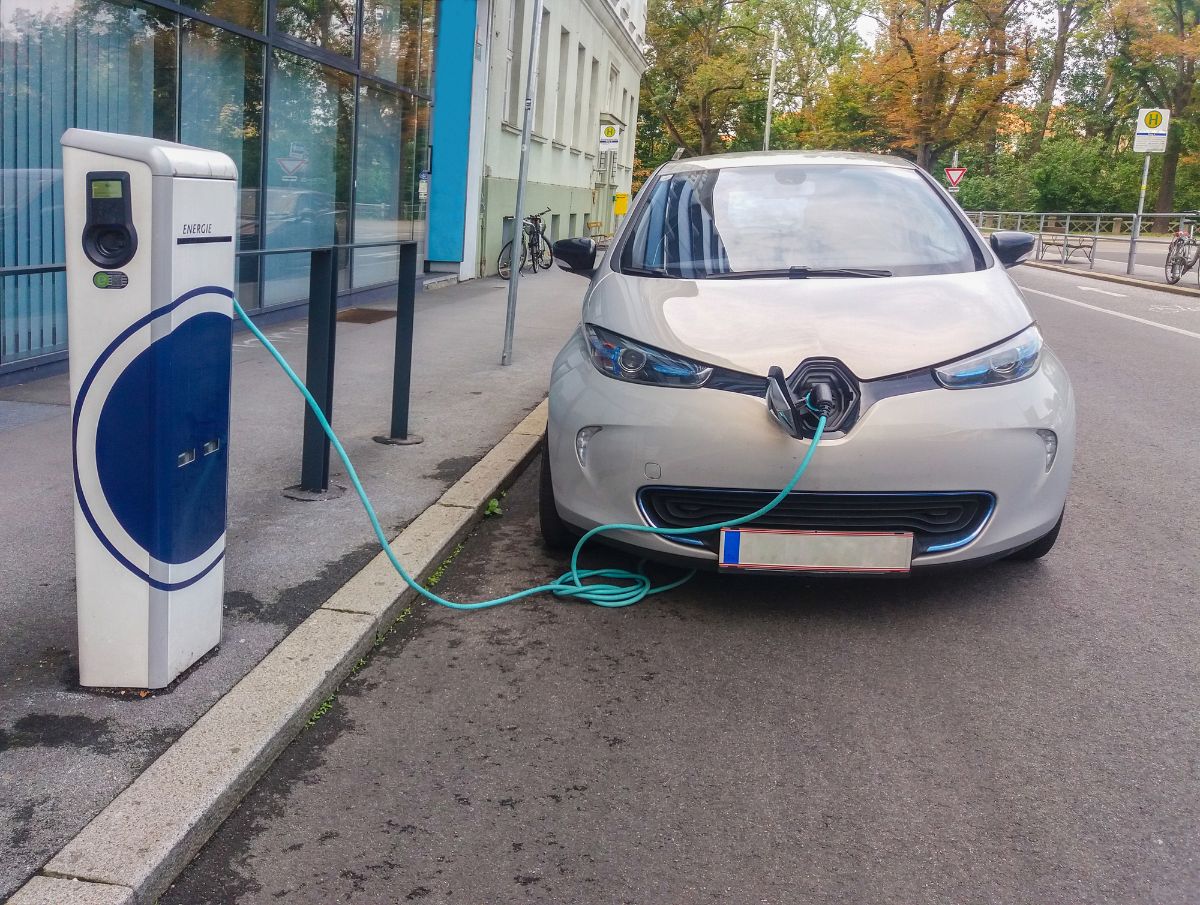
The little I know about cars extends to putting fluids where they’re supposed to go, how to put air in the tires or how to change one, and calling a tow truck when the car inexplicably stops working.
Venting doesn’t even appear on the horizon, except to aim them where the cool or warm air makes me comfortable. Alternatively, vents play a large part in the operation of electric vehicles. Why?
Type 1: The Battery In A Phone Doesn’t Need Venting. Why Are Vents For EV Battery Packs Necessary?

There are no pictures of vents for components of cars that need them. I can, however, show you how the components look and tell you why they need venting. Let’s take the battery pack, for instance.
You’ll agree that all the power stored in those little cells packs a punch, or you wouldn’t get any range at all. You’ll further agree that driving from PA to GA to see Grandma and Grandpa is going to get some heat going on.
Now, cars rarely blow up; that’s Hollywood baloney for you (they make more money if they blow stuff up.) They don’t even catch fire outside the movies, but sometimes they actually do. It happens when the heat gets too much to bear, and there’s no way to let off steam, so to speak. That’s where the vents come into play.
Nowhere was that more evident than in EV and hybrid battery fires of the first few years of their existence. They couldn’t refine the batteries until the technology became available.
Today, there is proper venting as well as an early warning system for overheated batteries on the point of starting a fire. Passengers have five minutes to get out of the car before trouble starts.
Safety measures are also built into the battery pack involving the vents. When the pressure builds up in the battery according to pre-defined perimeters, a membrane is pushed against a spike, causing the membrane to break.
This allows the pressure to escape, thereby equalizing the pressure in the battery pack. The vents are placed in a manner that eliminates the gassing of the passengers; gasses are directed outside the vehicle.
Type 2: There’s A Grill On A Combustion Engine To Provide Air Cooling. Why Aren’t There Similar Grills For Electric Motors?

Dozens of things are going on under the hood of a car while it’s running: heating, cooling, radio, lights, horns, dash instruments, electronics, window, and wiper motors, along with the transmission, and other EV motor functions.
The EV battery will run its share of these functions. The motor basically turns the wheels, which involves polarity and AC/DC (no, not the rock band) function. That means generated heat, which means pressure.
Vents for the EV motor and its varied-systems controller (like the heating and cooling systems, run by a compressor) first handle the venting of breathable particles so the controller maintains function, then they prevent moisture from corroding the controller, as well as prevent chemical corrosion.
Also involved in EV motor venting is keeping in what should be kept in such as the necessary fluids, as well as maintaining the integrity of the seals. These vents don’t require air cooling like a combustion engine does. In fact, the grille you’ll see on EVs is purely decorative.
However, some car suppliers have begun using grilles to house innovations like lighting, radar covers, and driving assistance (like parking cameras, for instance.) These grilles look like any other grille you’ve ever seen, which comforts drivers who expect their EV to look like all the other cars on the road.
Type 3: We Don’t Encounter Thermal Management In Everyday Life. If We Do, We Don’t Always Recognize It. What Does Thermal Management Mean Regarding Vents For EV Inverters/Converters?
Grab a coffee, because this is about to become a tad techy. The heat generated inside the battery pack of an EV is thermal energy. In order to control the thermal energy, proper cooling and venting are necessary. This energy results from the inverter/converter, which switches off carrying the electric current to and from the battery pack to the EV motor.
We know that a converter changes something from one thing into another. In the case of the EV, the converter changes the alternate current or AC in the battery pack into direct current or DC going to the EV motor.
An inverter transforms direct current or DC into alternate current or AC. EV drivers will use this in the battery power required to run their electronics, such as plugging in their laptops or tablets.
You can see how thermal energy is generated to power these things. Cooling and venting this energy is called thermal management and comes in two flavors: thermal control with air and thermal control with liquid. Both require a fan to move the cooling force, although liquid thermal control further requires a pump to help move the cooling force or coolant.
Both these thermal management methods are low power, compact in design, stable, and control thermal energy very well. The only disadvantages to thermal management methods is the noise the blower would make and possible leakage of the liquid coolant.
A simple enough system with fewer components than a combustion engine, nothing else on an EV generates the kind of energy or heat that needs venting. The transmission, although it’s part of the EV motor, doesn’t generate heat, nor does the charging port, so they don’t need venting.
4. We Don’t Normally Consider Inventions Of The 1800s. For Most People, It’s Too Far Back In Time. However, Did You Know Electric Vehicles Were Invented In 1832?

Buggies, carriages, and wagons were the modes of transportation up until cars were invented in the late 1800s.
It stands to reason that the first electric cars looked like a carriage with those huge wheels and a covered driving bench, except electrified. It featured innumerable crudities, but Robert Anderson’s 1832 electric car did run.
But The Seed Was Planted
It wouldn’t be until the late 1800s that more successful electric vehicles would be devised. Des Moines’ William Morrison introduced his version of the electrified carriage, and from then on, the idea caught on.
They were quiet and didn’t emit smelly fumes. Women especially appreciated this newest innovation and took up driving cars (remember Edith Crawley in Downton Abbey? Women were coming into their own about this time.)
During this time span, inventors were devising better electric cars. Thomas Edison, for example, worked on a better quality EV battery. Unfortunately, the discovery of “Texas Tea,” or “Black Gold” in Texas meant the death of the EV, at least for a while. Easily obtaining cheap crude at newly built filling stations meant that combustion engine cars became popular.
Now, spring forward in time to the 1970s, when gas prices soared, filling stations shut down, and people wondered how they were going to get to work and to the grocery store.
About this time, the electric moon vehicle televised on all three networks gave former combustion engine car drivers the idea of using EVs again. What the automakers came up with was ugly by our standards today, but it became THE mode of transport during the ‘70s.
And The Seed Grows
Now it’s the 1990s. Technology is leaping forward like the Energizer Bunny on Redbull. Automakers are researching and developing new electric cars with greater range and better batteries due to new Federal regulations.
They began to turn popular models into EVs, and the driving population became believers. Enter Tesla Motors, who introduced an EV with a 200-plus miles range. The believers are now a cult.
Add to this excitement, the growing charging infrastructure quickly covering the landscape. Now EV batteries are being made of less expensive materials, but they’re packing more punch. More and more EVs are becoming affordable for the buying public.
The Future Of The EV Is Looking Brighter
Sustainability and green are today’s keywords. We’re building green houses, commercial buildings, and cars. City buses run on sustainable fuels or are electric.
Commercial businesses are making their carbon footprint as close to zero as they can, with sustainability as the end goal. Some are already there. Today’s electric vehicles are an amazing leap from almost 100 years ago, but we did it.
Cool Facts About EVs That You Might Not Have Heard

• The cost of an EV battery has decreased by $1,000 in ten years.
• Ten million EVs are on the road, charging at over 25,000 charging stations.
• An EV would cost two dollars to power it the same distance as a combustion engine car with one gallon of gas, currently at $6 per gallon.
• A Tesla Roadster gets 0 to 60 in 1.9 seconds. It takes a Ferrari 2.8.
• Almost half the world’s EVs are in China.
• Fifty-seven percent of drivers won’t drive an EV due to worry the car will run out of its charge. In reality, only five percent of EVs have run out of charge.
• Ninety-six percent of EV owners would buy another.
• Perhaps the coolest of Tesla’s EV innovations is the automatic system regulating the cabin temperature for pets. The EV also broadcasts to all viewers the notice that the animal is cool inside the cabin.
• Did you know that braking adds electricity back to the battery pack? Driving down a hill could net EV drivers more mileage.
• EVs have no spark plugs, need no oil changes nor timing belts, nor do they require regular vehicle maintenance. Feel like saving some money? You could save over $1,500 driving an EV.
• EVs offer drivers better acceleration and deceleration. Just ask anyone driving one on drag strips.
• Did you know you wouldn’t need a key to drive an EV? Instead, you will use a keycard (like a hotel) and an app on your smartphone.
• We’ll bet you didn’t know that EVs are all automatic. No gearbox, no clutch, no gearshift. You’ll accelerate with one pedal and brake with another. That’s it.
EV Vent FAQ
Why Do Electric Vehicles Need Vents?

Everything in a car produces heat. The lights, electronics, heating, air conditioning, the motor, and all sorts of things cause heat that needs venting. The outside temperature affects the components of a car, too. All that heat means that if it isn’t vented, something’s going to blow out and need replacement. That can get expensive, so venting is vital to the operation of a vehicle.
Add to this the fact that air coming in through the grille cools the car’s components. EVs, however, don’t have a grille like combustion engines have. What grille there is is pretty much for looks, although some air does get through to cool the engine’s components.
Do Lithium-Ion Batteries Need Ventilation?
Even though Li-ion batteries don’t have the buildup of gas that other batteries have, they still have thermal buildup. If it isn’t vented, the battery will get too hot and blow up.
Does Running The A/C Drain An EV’s Battery?
Long story short, yes. The EV battery works with the motor to run the car. Using electronics, the heat and/or A/C, and using the lights, among other things, all run down an EV battery. A drained battery pack will severely affect the range of the car.
Do Cold Temperatures Kill An EV Battery?
While the motor is running, the battery is recharged, so it will start the next time. However, temps at or below 32 degrees Fahrenheit or zero degrees centigrade cause batteries to lose their power.
Can I Store An EV Battery And For How Long?

Yes, an electric battery can be stored for up to four years if it’s stored and maintained properly. That means (a) storing the battery upright, (b) keeping it in a well-ventilated dry place, (c) keeping the ambient temperature at about 60 degrees, and (d) charging the battery every two weeks or so.
What If My EV Runs Out Of Charge?
Simple: the car will stop. You’ll need to call for roadside assistance to have the car towed to the closest charging station. An EV can be jump-started, but it’s rare that this is necessary.
Why Don’t EVs Use Oil?
Electric vehicles use no pistons, gears that revolve, valves, or other parts that move. Thus, EVs need no oil to keep these moving parts lubricated.
Do Electric Vehicles Have Radiators?
Some do in order to cool the battery pack. However, not all EVs have radiators, because they use air from fans or liquid with pumps to cool the battery pack.
Do Electric Vehicles Use Brake Fluid And Brake Pads?
Braking an electric vehicle adds power back to the battery pack. Thus, the pressure on the brakes is less than it is in a combustion engine-powered car. This saves the brake pads from too much wear and tear, meaning they last longer. The brake fluid still needs regular checking, flushing, and replacement, just like any vehicle.







